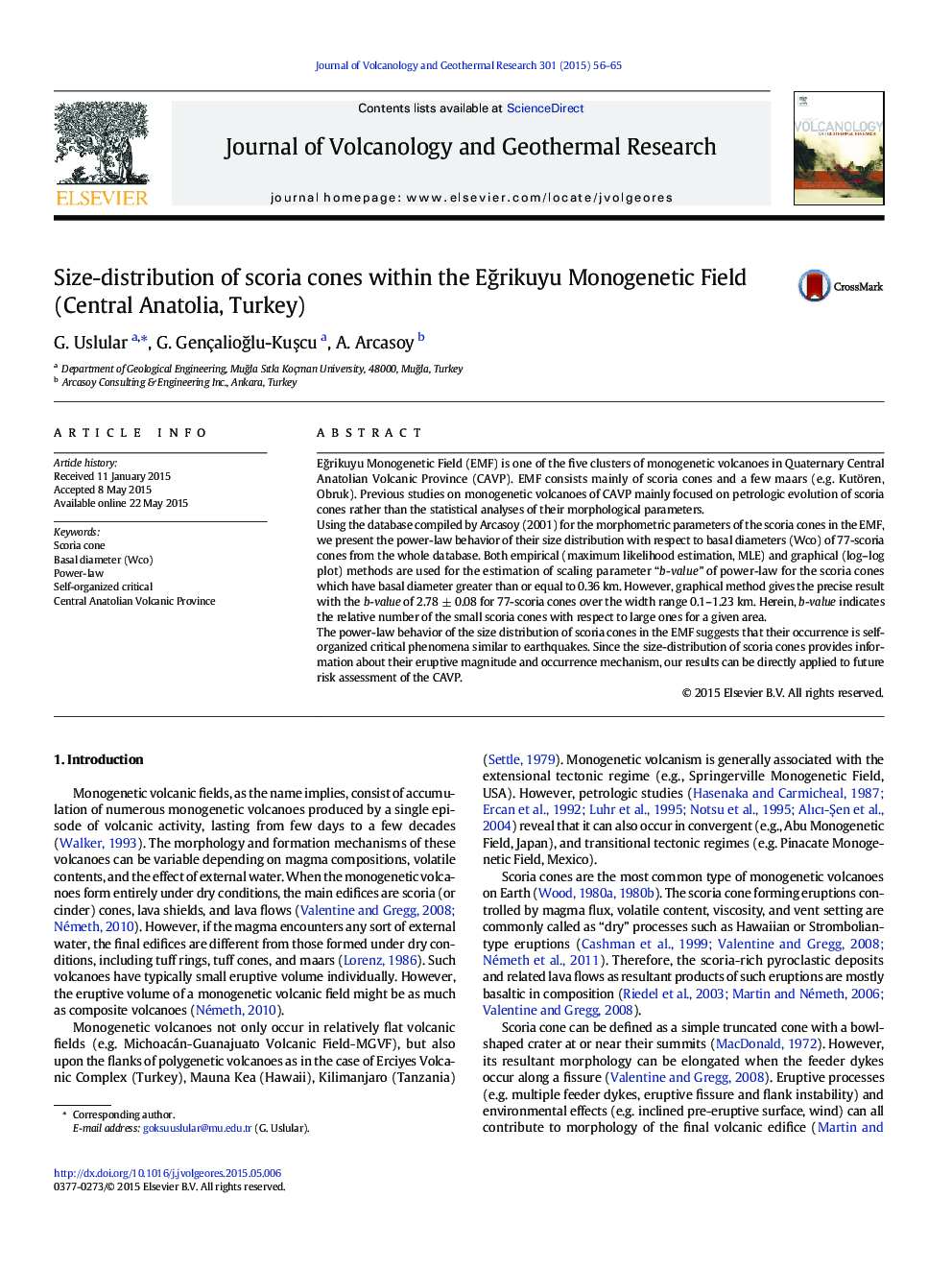| Article ID | Journal | Published Year | Pages | File Type |
|---|---|---|---|---|
| 4713113 | Journal of Volcanology and Geothermal Research | 2015 | 10 Pages |
•We apply a scaling law with regard to Wco of the scoria cones similar to those for earthquake magnitudes by GR scaling law.•Wco size distribution of the scoria cones with threshold value 0.36 km satisfies a power-law.•We calculate a and b parameters of power-law equation as ln(N ≥ Wcot) = a − bln(Wcot) with a = 8.74 and b = 2.78.•The scoria cones can be classified as small to medium size based on their heights, volumes and areas.•The occurrence of scoria cones is a SOC phenomenon in terms of their power-law behavior and fractal size distributions.
Eğrikuyu Monogenetic Field (EMF) is one of the five clusters of monogenetic volcanoes in Quaternary Central Anatolian Volcanic Province (CAVP). EMF consists mainly of scoria cones and a few maars (e.g. Kutören, Obruk). Previous studies on monogenetic volcanoes of CAVP mainly focused on petrologic evolution of scoria cones rather than the statistical analyses of their morphological parameters.Using the database compiled by Arcasoy (2001) for the morphometric parameters of the scoria cones in the EMF, we present the power-law behavior of their size distribution with respect to basal diameters (Wco) of 77-scoria cones from the whole database. Both empirical (maximum likelihood estimation, MLE) and graphical (log–log plot) methods are used for the estimation of scaling parameter “b-value” of power-law for the scoria cones which have basal diameter greater than or equal to 0.36 km. However, graphical method gives the precise result with the b-value of 2.78 ± 0.08 for 77-scoria cones over the width range 0.1–1.23 km. Herein, b-value indicates the relative number of the small scoria cones with respect to large ones for a given area.The power-law behavior of the size distribution of scoria cones in the EMF suggests that their occurrence is self-organized critical phenomena similar to earthquakes. Since the size-distribution of scoria cones provides information about their eruptive magnitude and occurrence mechanism, our results can be directly applied to future risk assessment of the CAVP.
